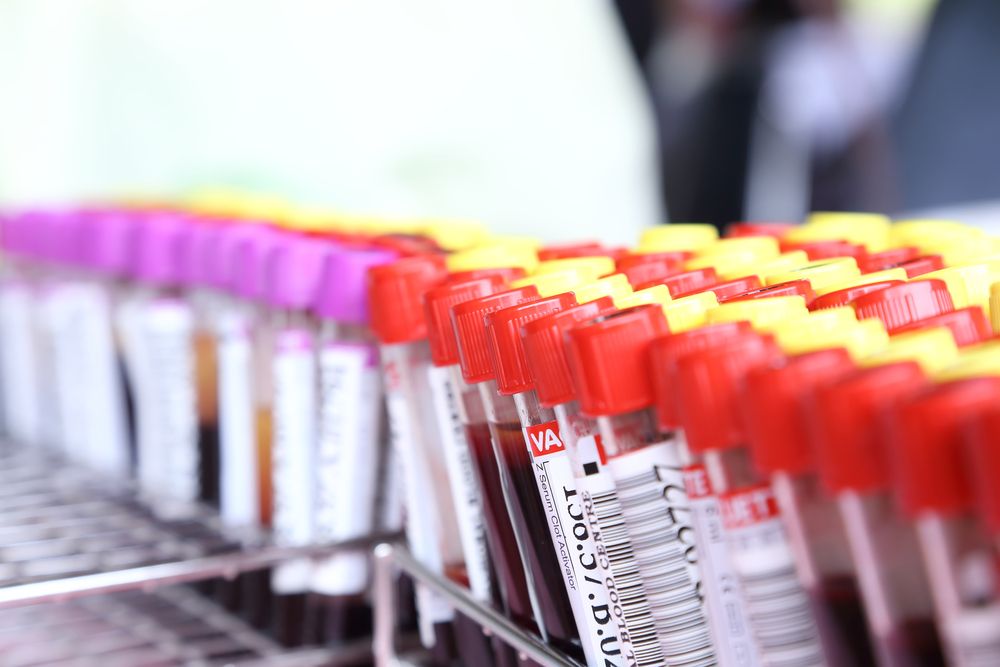What ACPA and RF Positivity Portends in RA
The interaction of anticitrullinated protein antibody and rheumatoid factor may foretell the response to treatment in patients with rheumatoid arthritis.
Image credit: ©Thalerngsak_Mongkolsin/Shutterstock.com

A recent study that evaluated the interaction of anticitrullinated protein antibody (ACPA) and rheumatoid factor (RF) in patients with rheumatoid arthritis (RA) found that combined ACPA and RF positivity was associated with an improved and more rapid response to antirheumatic medications.
ACPA and RF are predictive of the clinical course of RA; however, the incremental prognosis of both antibodies being positive in active established RA is unknown. A team of researchers led by Janet E. Pope of the Division of Rheumatology, University of Western Ontario, in Canada, conducted a study to evaluate the impact of both ACPA and RF in predicting sustained clinical response and to determine whether double-positive antibodies have a different effect on response to treatment compared with other combinations.1 The results were published in RMD Open.
The study
The Ontario Best practices Research Initiative (OBRI) is a provincial registry that prospectively gathers long-term information on patients with RA followed in routine care. For this study, the analysis population was restricted to patients with available autoantibody information (ACPA and RF status), baseline Clinical Disease Activity Index (CDAI), and at least one follow-up assessment.
A total of 970 patients were included in the analysis, and patients were classified into one of four groups: (1) 262 patients (27%) were ACPAneg/RFneg; (2) 60 patients (6.2%) were ACPApos/RFneg; (3) 117 patients (12.1%) were ACPAneg/RFpos; and (4) 531 patients (54.7%) were ACPApos/RFpos. At baseline, significant differences were observed between groups in age, CDAI, tender joint count, and Health Assessment Questionnaire, with ACPApos/RFpos and ACPApos/RFneg patients being youngest and having the lowest disease activity and disability. Biologic use was reported in 20.2% of patients, but no differences were observed between groups.
CDAI was examined in two ways: (1) achievement of sustained remission, defined as at least two sequential visits separated by at least 3 and up to 12 months, with CDAI ≤ 2.8 and (2) change in CDAI from baseline as a continuous variable over time.
Next: the findings-and the implications for physicians
The findings
The study found that combined ACPA and RF positivity was associated with higher remission rate and greater improvement in disease activity during treatment with antirheumatic medications. “The magnitude of this association seems to be driven by ACPA status rather than RF status, as a similar strong association was found between positive ACPA and low disease activity compared with negative ACPA,” the researchers note.
Over 3 years’ mean follow-up, sustained remission was achieved by 231 (43.5%) of ACPApos/RFpos patients, 26 (43.3%) of ACPApos/RFneg patients, 37 (31.6%) of ACPAneg/RFpos patients, and 85 (32.4%) of ACPAneg/RFneg patients. “Over time, significant differences were observed in cumulative incidence of achieving first sustained clinical response based on both ACPA and RF status,” the authors observe.
Time to achieving first sustained remission was shorter in ACPApos/RFpos (median, 3.7 years) and ACPApos/RFneg (median, 3.4 years) patients compared with ACPAneg/RFneg patients (median, 5.1 years). Higher CDAI and older age at baseline were negatively associated with achievement of sustained remission.
After adjusting for potential confounders (age, sex, CDAI at baseline, and time), a significantly greater improvement in CDAI was observed in ACPApos/RFpos patients compared with ACPAneg/RFneg patients. Female sex and higher CDAI at baseline were significantly associated with smaller improvement in CDAI over time.
Implications for physicians
Strengths of this study include the use of a large real-world RA patient population; however, there may be other unmeasured confounders that have not been accounted for. The researchers were unable to assess the impact of ACPA and RF status on structural joint damage, as this information was not collected by the registry. As an observational study, the results are potentially confounded because it is not randomized. Finally, treatment was selected by the treating physician, and there could be a channeling bias.
Still, this study found significant differences in treatment outcomes based on combined ACPA and RF status at baseline. ACPApos/RFpos status was associated with earlier achievement of sustained remission. Both ACPApos/RFpos and ACPApos/RFneg status were associated with greater improvements in CDAI compared with ACPAneg/RFneg status. For rheumatologists who see patients in routine clinical care, these results could inform decision-making in the management of RA.
References:
1. Pope JE, Movahedi M, Rampakakis E, et al. ACPA and RF as predictors of sustained clinical remission in patients with rheumatoid arthritis: data from the Ontario Best practices Research Initiative (OBRI). RMDOpen. Published online Nov. 5, 2018. DOI: 10.1136/rmdopen-2018-000738.